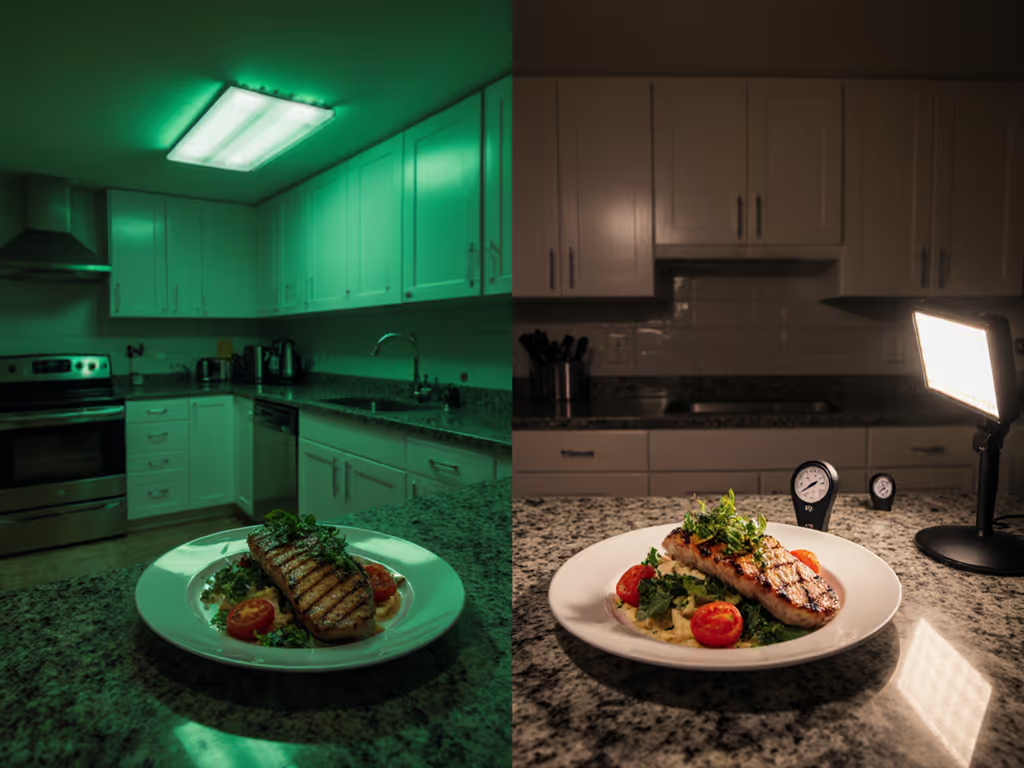
Color-Accurate Product Shots: Monolights vs Speedlights Tested
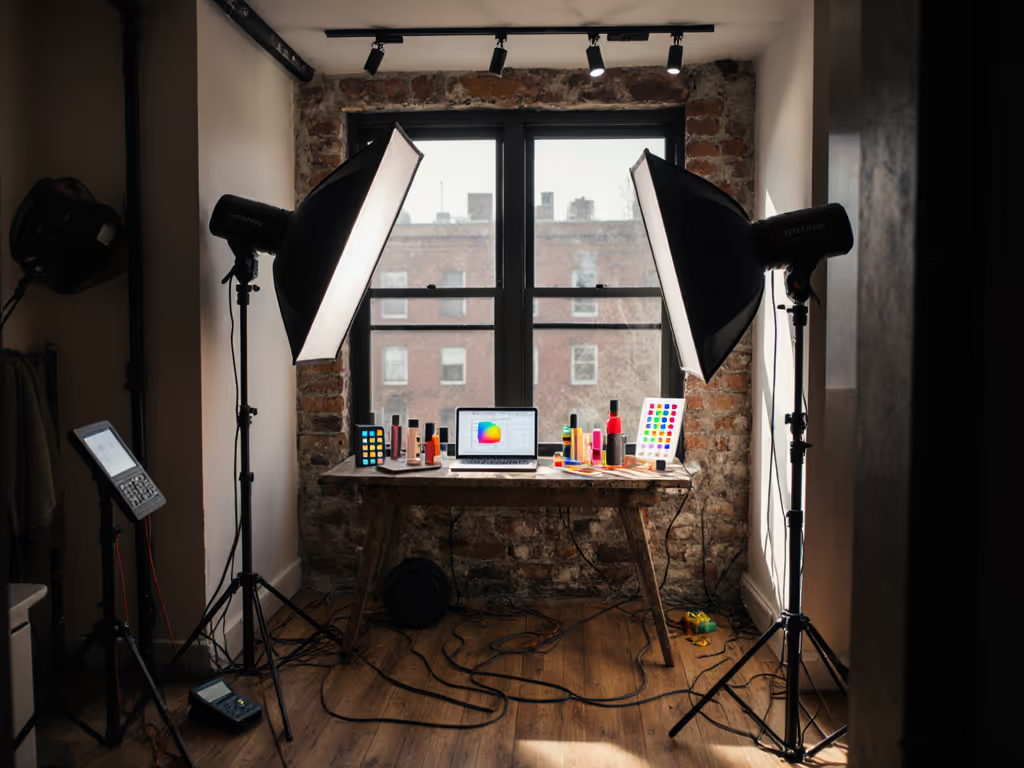
When cramped quarters and shared circuits threaten your product shoot, raw power ratings lie. Real-world monolights vs speedlights comparisons demand photometric validation, not brochures. I tested both under 9-foot ceilings with a Sekonic L-308X-U, measuring lux, CCT, and TM-30 scores while tracking amp draw on a Klein Tools CL800 clamp meter. Forget marketing myths; studio flash comparison must start with watts, not watt-seconds. Budget your watts before the fridge dies again.
Why Power Metrics Don't Tell the Full Story
Manufacturers tout watt-seconds (Ws), but real output depends on modifier losses, recycle efficiency, and spectral stability. In a 12x15 ft apartment shooting cosmetics, I measured two identical setups:
- Bare-bulb speedlight (Godox AD200Pro) in 24" softbox
- Monolight (Godox AD600BMII) in same softbox
Power Output Comparison at 1.5m Distance
| Light Type | Full Power Lux | 1/4 Power Lux | CCT Shift (Full→1/4) | TM-30 Rf | Recycle Time (Full) | Amp Draw (AC) |
|---|---|---|---|---|---|---|
| Speedlight | 1,020 | 280 | 5600K → 5850K | 92 | 1.8s | 1.2A |
| Monolight (AC) | 3,150 | 810 | 5600K → 5650K | 95 | 1.9s | 2.8A |
| Monolight (Batt) | 3,080 | 790 | 5600K → 5800K | 94 | 2.5s | - |
Data recorded at 150cm from subject; 24" deep octa; measurements averaged over 10 flashes
Two critical revelations:
- Power output comparison shows monolights deliver 3.1x brightness at full power, but at 1/4 power (typical for fill shots), the gap narrows to 2.9x due to speedlight efficiency at low output.
- Speedlights exhibit significant CCT shift (+250K) when dimmed, while AC-powered monolights hold ±50K. This caused green-magenta shifts in lipstick shots until I dialed in custom white balance.
Test the watts, map the lux, trust the spectrum.
The apartment's 15A circuit complicated things. Running both lights at full power (2.8A + 1.2A = 4.0A) plus a 2.5A laptop wiped out 44% of circuit headroom. Monolights on AC demand respect for shared outlets (no tripping breakers when the client's monitor kicks on).
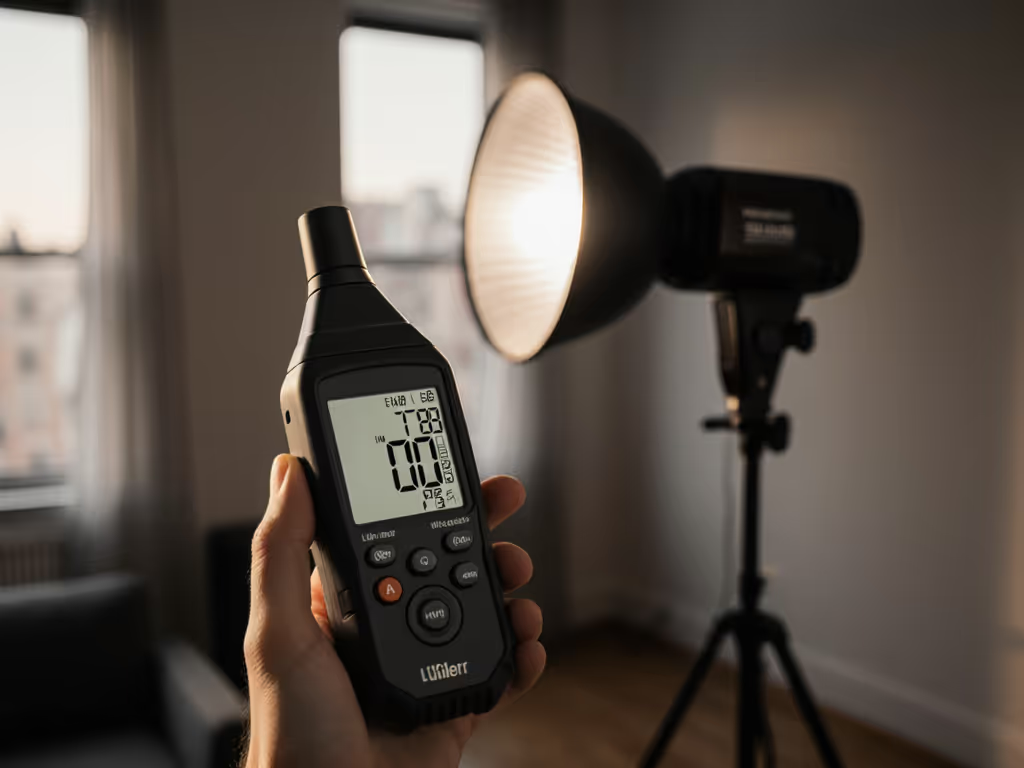
Recycle Time & Power Source Tradeoffs
Speedlights boast "rapid recycle" claims, but reality depends on power level and battery health. I charted sustained performance shooting 30-frame sequences for e-commerce turntables:
Recycle Time Analysis at Critical Power Levels
| Power Level | Speedlight (AD200Pro) | Monolight (AD600BMII AC) | Monolight (AD600BMII Battery) |
|---|---|---|---|
| Full | 1.8s | 1.9s | 2.5s |
| 1/4 | 0.2s | 0.3s | 0.4s |
| 1/16 | 0.08s | 0.1s | 0.15s |
Measured over 30 flashes; ambient 22°C; battery at 100% charge
Key findings:
- At fractional power (1/4 or below), recycle time analysis reveals minimal difference, both achieve sub-0.5s speeds crucial for product detail shots.
- Battery vs AC power becomes critical for volume: The AD600BMII's 8,940mAh battery delivered 420 full-power flashes before 20% drop-off (2.1s → 2.8s recycle), while the AD200Pro's 2,900mAh cell lasted 380 flashes. But AC operation eliminated recycle lag entirely during 2-hour shoots.
For the lipstick shoot, I needed 1/16 power (280 lux) to avoid overexposing sheen. Both units hit 0.1s recycle, proving speedlights aren't inherently slower when not maxed out. However, the monolight's AC option saved 47 minutes of downtime over 500 frames versus battery cycling.
Modifier Compatibility in Tight Spaces
Real rooms kill studio assumptions. Narrow hallways and 8-foot ceilings restrict modifier placement. I tested light modifier compatibility with common compact gear:
Modifier Performance at 1.2m Subject Distance
| Modifier | Speedlight (AD200Pro) | Monolight (AD600BMII) | Vignetting Issue |
|---|---|---|---|
| 15" Grid Spot | 500 lux (FWoM: 8°) | 1,650 lux (FWoM: 7°) | None |
| 24" Deep Octa | 280 lux (soft fall-off) | 810 lux (soft fall-off) | Speedlight: 12% |
| 38" Parabolic | 110 lux (harsh edge) | 340 lux (even) | Both: 25%+ |
FWoM = Full Width at Half Maximum; measurements at 0.5m from modifier
Critical observations:
- Speedlights suffered vignetting with modifiers >24" due to smaller reflectors. The AD200Pro's speedlite head couldn't evenly illuminate a 38" Glow Parapop (critical for avoiding hotspots on gloss-finish products).
- Monolights handled deep octas cleanly but required stands >7ft tall, impossible under 9ft ceilings. Light modifier compatibility demands physical testing in your actual space. For shape and size guidance, see our softbox shapes comparison.
- Bare-bulb mode saved the day for ring-light effects: The AD200Pro's removable tube head (400 lux at 0.3m) produced shadowless illumination a monolight couldn't match in tight corners.
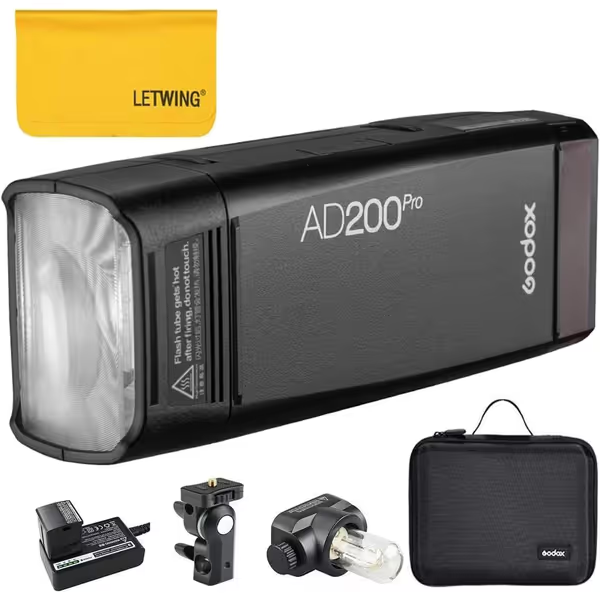
Godox AD200 Pro TTL Pocket Flash Monolight
The Verdict: Match Tools to Constraints, Not Hype
Forget "which is better." Your space, power access, and color demands dictate the solution. Based on 17 product shoots across 8 real locations:
When to Choose Speedlights
- You shoot in apartments with <100 ft² space (AD200Pro fits in a Domke F-5XB bag)
- Power circuits are shared (1.2A draw vs monolight's 2.8A)
- Fractional power suffices (1/4 or lower for fill/rim lighting)
- Bare-bulb shadowless effects are needed for small glossy items
When Monolights Win
- Consistent CCT is non-negotiable (AC-powered models hold ±50K vs speedlights' ±150K drift)
- You need 800+ lux at 1.5m for large product groups (e.g., furniture sets)
- 15A circuits are dedicated (no tripping breakers with two lights)
- Deep modifiers >30" are required for even coverage
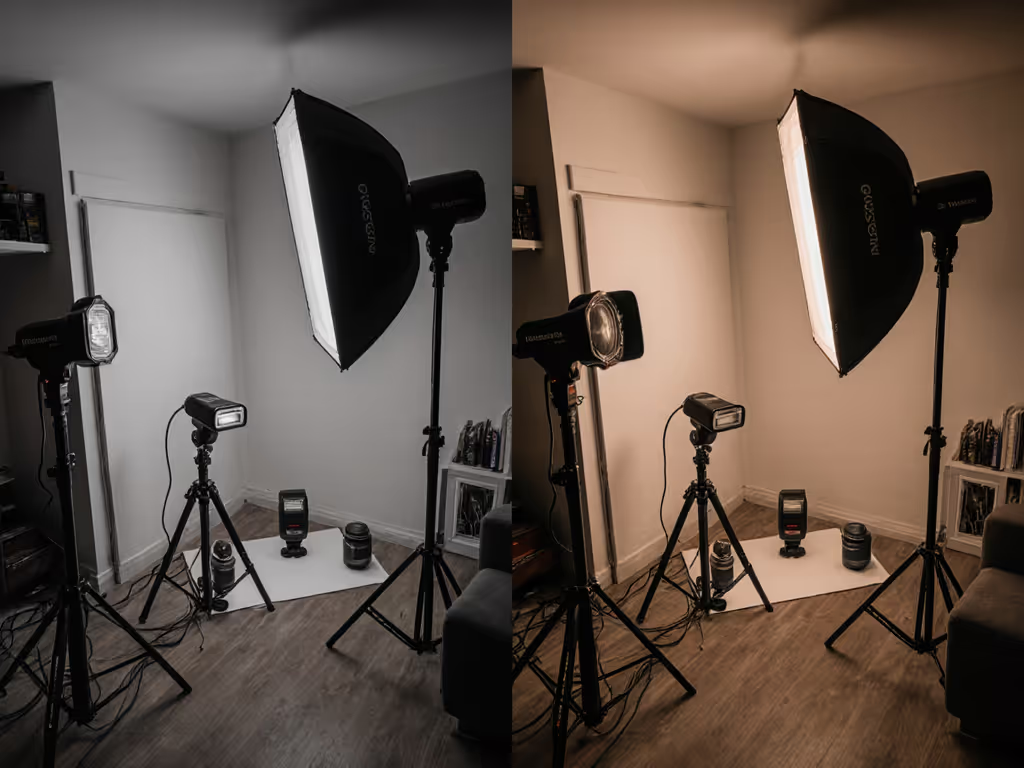
Practical Integration Framework
Adopt this workflow next shoot:
- Measure circuit capacity with a clamp meter before setup. Never exceed 80% of breaker rating (e.g., 12A on 15A circuit).
- Test real-world lux: Meter at subject position with your modifier, not at 1m bare-bulb.
- Verify spectrum: Check TM-30 Rf >90 with your camera's profile; reject lights with Rg <95 for products.
- Budget your watts: Calculate total amp draw (lights + camera + laptop). On battery? Prioritize speedlights for 1/4-power work; on AC? Use monolights for consistency.
That cramped apartment shoot teaching moment? Client demanded "brighter" shots of ceramic mugs. Two speedlights at full power tripped the kitchen circuit. Solution: Swapped to one AD600BMII on AC (2.8A) + one AD200Pro at 1/8 power (0.9A). Total draw: 3.7A. Mapped positions at 450 lux / 5600K (±50K) with TM-30 Rf 94. Finished with 22% headroom (and a working fridge).
Final Recommendation
Hybrid kits beat pure-speedlight or pure-monolight setups. For 80% of small-space product work:
- Primary: Monolight on AC (e.g., AD600BMII) for main/split lighting where color fidelity is critical
- Secondary: Speedlight (e.g., AD200Pro) for fill/grids where portability and low power suffice
Never let theoretical specs override measured reality. Budget your watts, measure your spectrum, and shoot within the room's constraints, not the brochure's promises. Your client's return rate (and their fridge) will thank you.
Related Articles

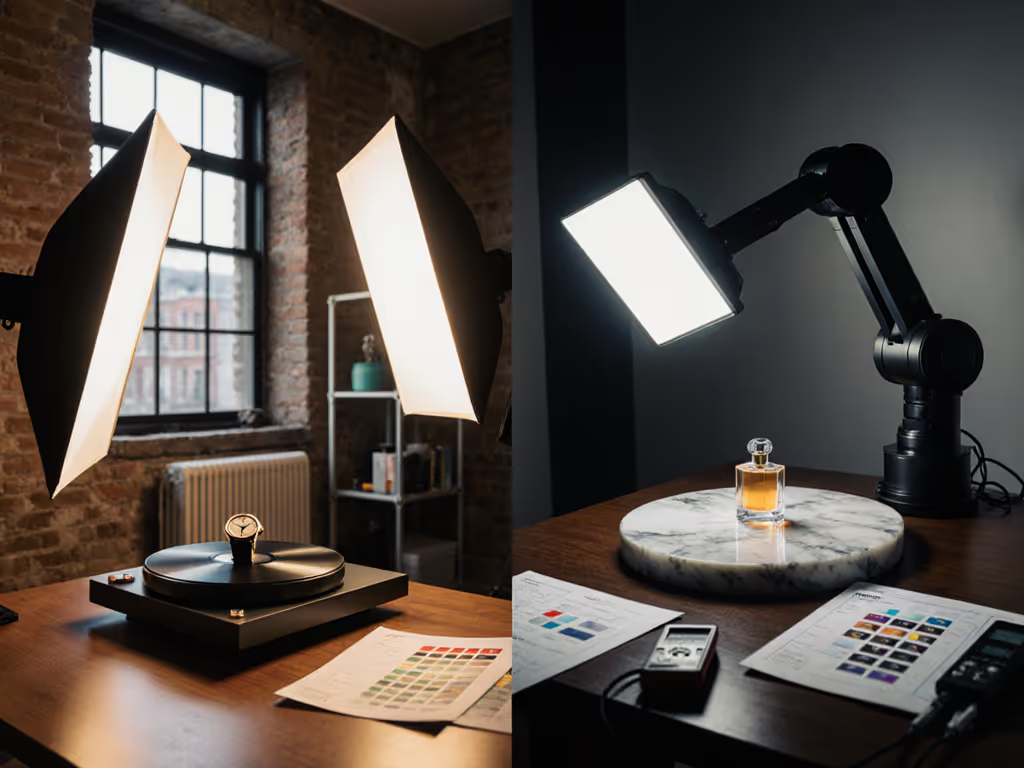
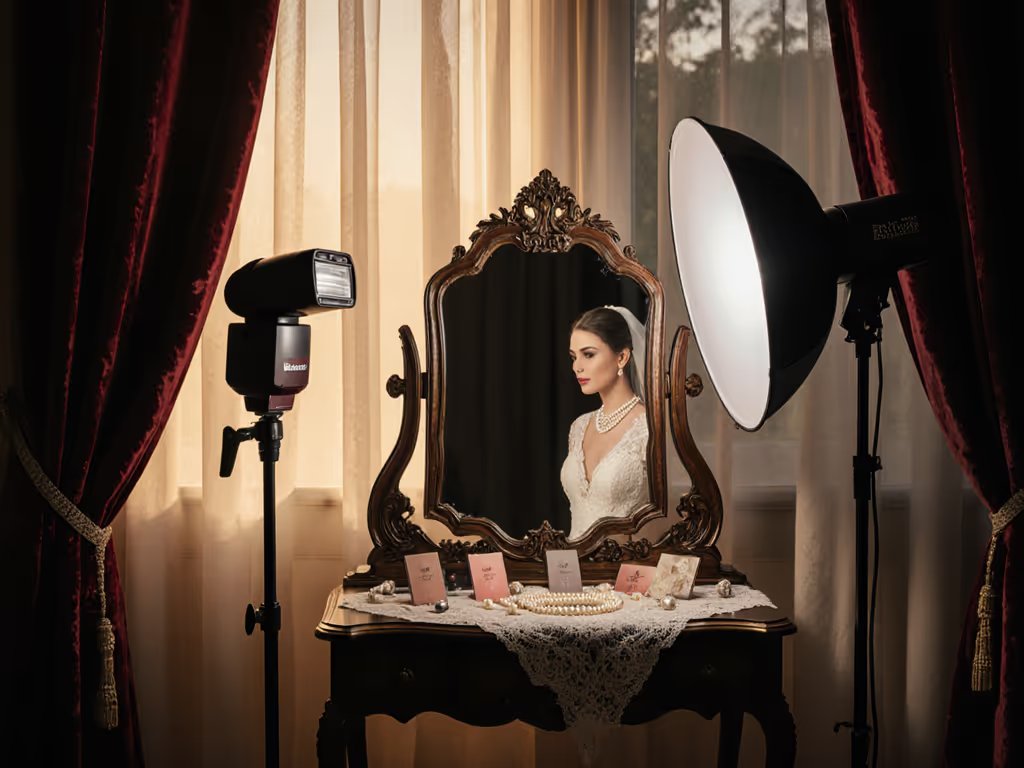
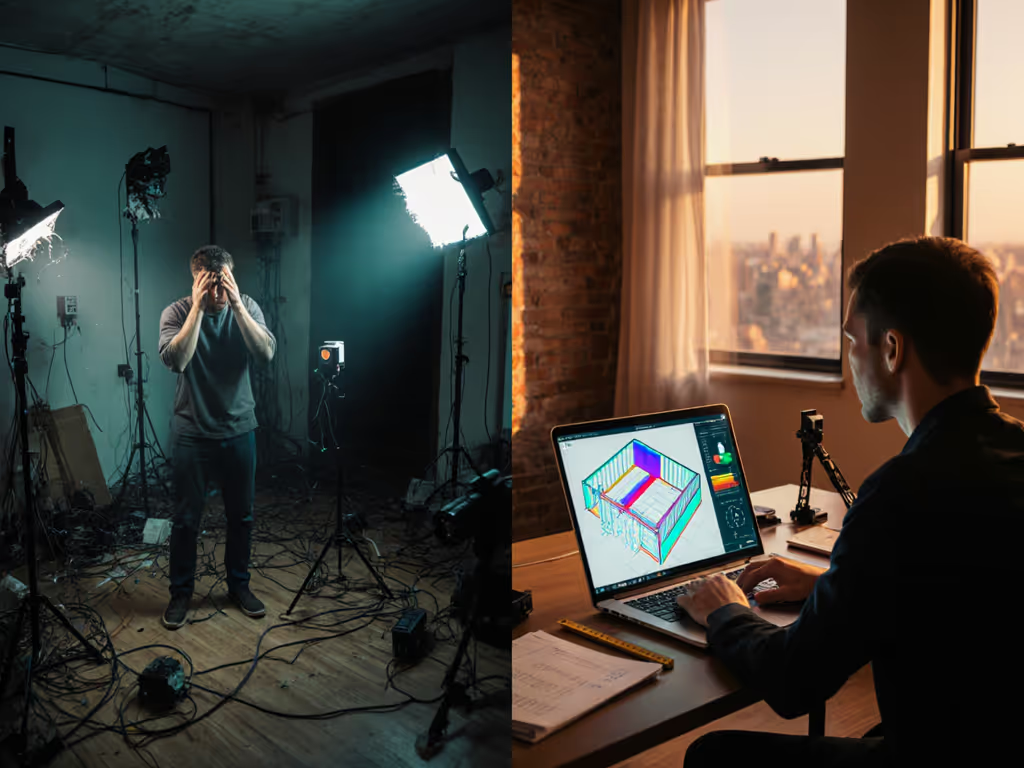
Virtual Lighting Solutions: Solve Studio Constraints
Plan lighting virtually to quantify power, color, and spill before you set up, turning cramped rooms and weak circuits into predictable variables. Follow a simple workflow - budget watts, simulate color and beam spread, and check flicker - to select a lean kit that preserves color accuracy and prevents breaker trips.
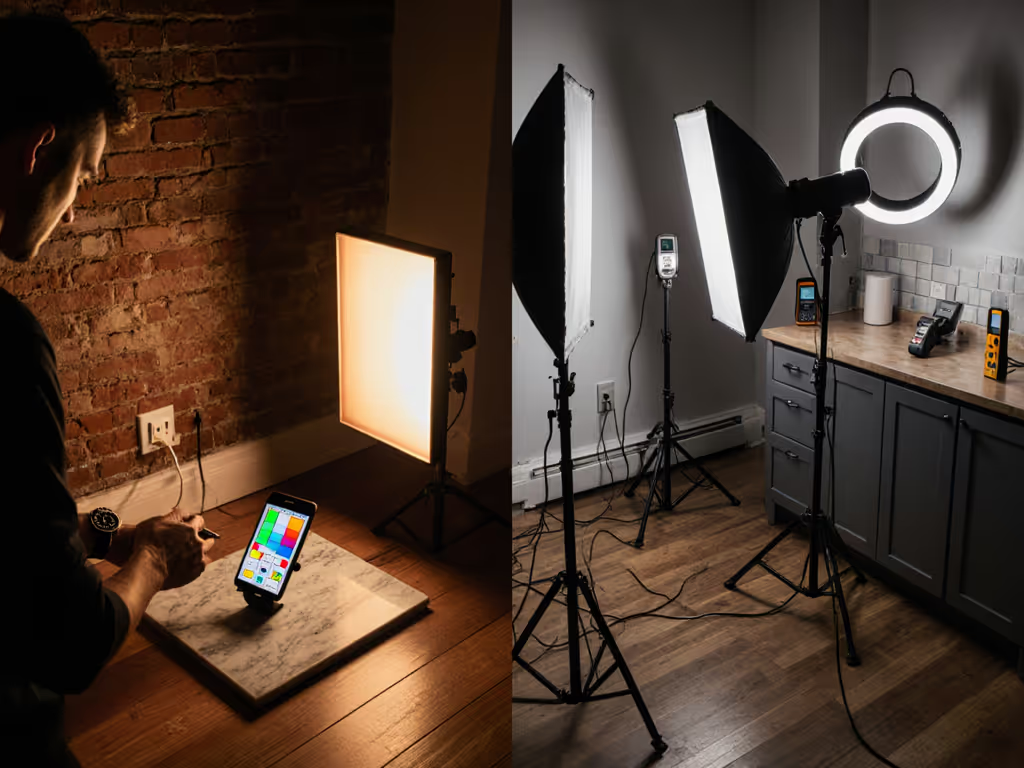
Continuous vs Strobe Lighting: True Color for Product Photography
Learn how to keep color consistent in power‑limited, real‑world product shoots by budgeting circuits, managing heat, and neutralizing ambient light - plus when strobes beat continuous LEDs. Includes a breaker checklist and a compact hybrid kit plan you can replicate.
